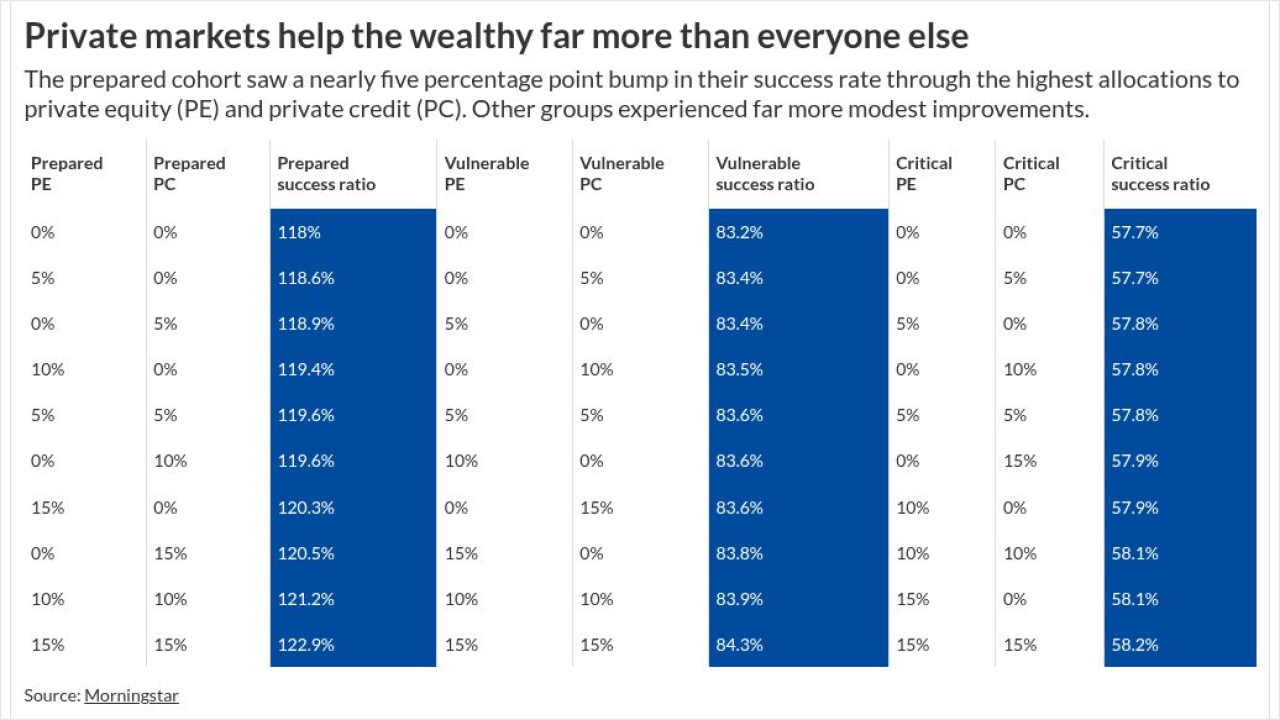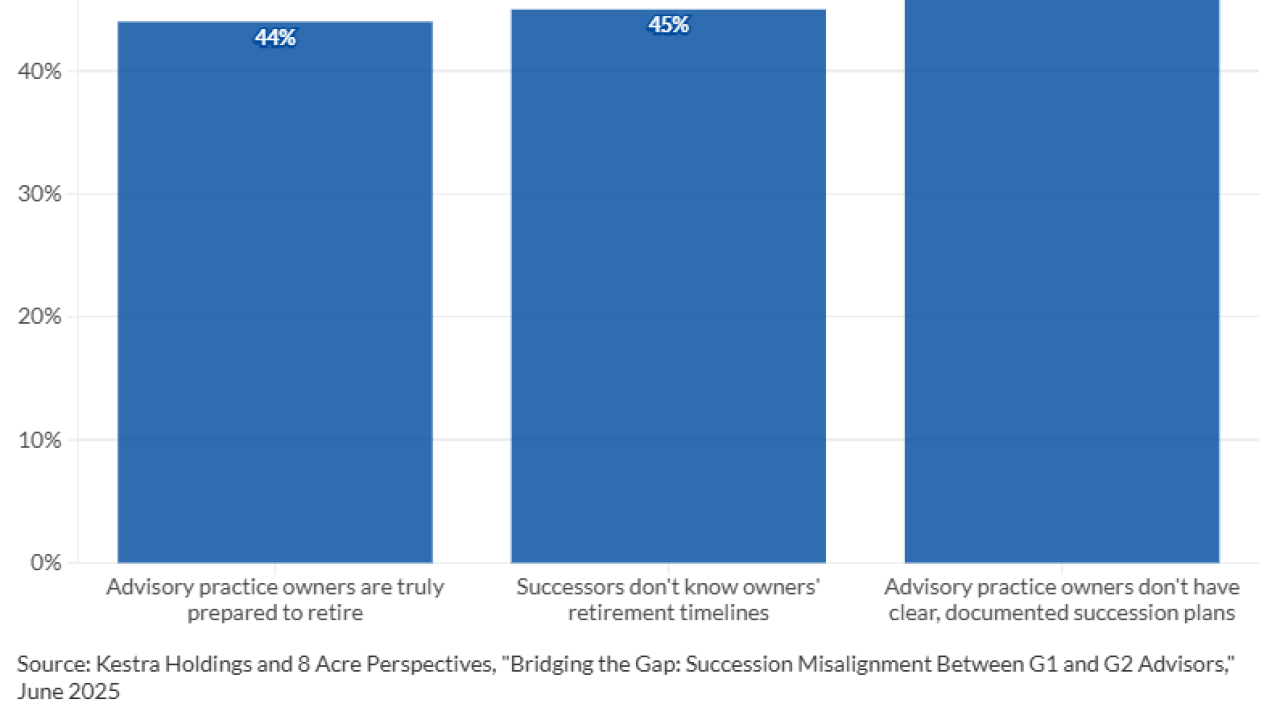In a memo released Wednesday, the San Francisco-based wirehouse also outlined plans to make it a little easier for
The one big change will be for advisors who have eight or more years of experience and are now bringing in less than $300,000 in annual revenue for the firm. Wealth managers in that category now get to keep 15% of any revenue they produce under $13,500 in a month and 30% for anything above that. But if they manage to meet or exceed that $300,000 threshold, those payout rates increase to 22% and 50%, respectively — giving advisors a strong incentive to increase their revenue production.
Starting next year, Wells advisors with eight-plus years of experience will have to produce at least $330,000 in annual revenue to see the same bump in their payout rates. Andrew Tasnady, an industry compensation consultant and founder of Tasnady & Associates, said the change is in line with a long-standing industry trend: Firms generally want
READ MORE:
Tasnady said Wells' plans for its lowest tier in its compensation grid — often called the penalty box — are "very punitive."
"Basically, if you are in there for one month, you can survive," he said. "But if something happened to your business and you're perpetually below that now $330,000 level, you'll probably need to switch firms or join a team or do something else entirely."
Danny Sarch, the president of the industry recruiting firm
"If you have to save a certain amount of money, it's much easier to hit the smaller producer," he said. "You don't really care if they leave, if that ends up being the tradeoff."
What to do with those small household accounts?
Wells similarly plans to lower the compensation it pays to advisors for managing relatively small household clients. Wells has had a policy of letting wealth managers keep 10% of the revenue generated by household accounts with less than $100,000 and 20% on accounts holding between $100,000 and $250,000. The new payout rate next year will be 10% on all household accounts with $250,000 or less.
The one exception is for accounts held by relatives of longstanding wealthy clients — or so-called multigenerational accounts. The payout on those will be a flat 30% no matter their asset holdings.
Again, Tasnady said, the goal is to make it a little harder to devote time to things that generate relatively little revenue. Many firms, he said, would prefer to see advisors move small accounts over to call-center services or hand them off to less-experienced colleagues.
"A $25,000 household account is probably generating maybe $250 in revenue a year, and you may be getting paid $100 on that for the whole year," he said. "So get rid of these accounts, send them over to the call center and spend time with the $2 million account."
The headcount question
That
The firm has also strived to improve its advisor retention, especially after a series of scandals related to its banking division prompted many wealth managers to head for the exits. Speaking last month
"We're seeing good recruiting," he said. "We went from industry-leading in attrition to what we think is industry-leading in retention."
Sol Gindi, the head of
"Our commitment to ensuring our compensation is consistent, easy to understand, and rewards growth is one of the main reasons that we continue to see low levels of attrition and bring over some of the industry's top talent," he said in an email statement. "Year to date, advisor hiring is up more than 50% compared to last year."
Growing rewards
Wells' 2025 compensation plan will also make it easier to qualify for
Advisors who hit those goals get to keep half of the revenue they generate for the firm. But the growth compensation is only offered to top producers: advisors who generate $2 million or more a year in revenue — or teams that do $800,000 on average for each member.
Again, Tasnady said, Wells is seeking to give its best advisors additional reasons to stay put. Other parts of the firm's growth compensation plan, meanwhile, are meant to encourage certain behaviors.
Like many firms with bank divisions, Wells encourages its wealth managers to look for ways to start banking relationships with clients. To that end, the 2025 compensation policy will offer $500 for every time an advisor referral leads to the opening of a checking account.
"It's a communication device," Tasnady said. "In this case, they want to promote the checking account. So they introduced a new bonus. And particularly in the first year, you would think that you'd get a nice blip in new checking accounts."
A little compensation example
The advisor's annual pay, in turn, would increase to $609,575 from $468,965. Roughly $550,000 of that higher payout would be in cash and in the rest in deferred compensation to be received at a later date.
"Advisors should be pleased by this plan," Tasnady said. "There are no major changes, and very limited negatives that won't affect many people. There's two minor tweaks on the downside. And there's a little more room on the upside for growth."






